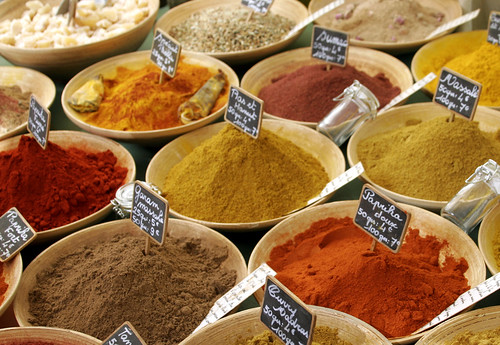Perfumes in wine: how to learn a wine's bouquet, descriptions and a sommelier spice nose

The advice from our first lecturer in our sommeliers course is numerous and varied but one thing she said was that you can never identify a perfume if you can’t recognise it. She gave the example of an aromatic traminer and a group of teenagers that she once had to do a lesson with on wine tasting.
She had chosen traminer for the very fact that its aroma is unmistakable – it’s not called an aromatic grape for nothing. The students probably smelled wine and that’s about it, but one guy said “it smells just like lychees”. To say the audience was floored is to say little. But it was around Christmas time, lychees in Italy are in great supply and it happened to be his favourite fruit. Moral of the story? Know your perfumes.
What does this mean for an Australian in Italy learning wine tasting techniques? First of all, I need to gain some European knowledge, especially about plants. There are certain rules about wine tasting, one of which goes thus: white wine – white flowers and white fruit, red wine – red flowers and red fruit. Which is fine if you know your flowers.
My parents had a modest cottage garden in Australia when I was a child, but it soon evolved into something more native, and certainly didn’t include violets or peonies – just two of the flowers we’ve supposedly smelled in wines this week. My first step will be to learn the flowers in Italian. While some are similar, others are very different – hawthorn, for example, is called biancospino. My second step will be to start recognising the smell of these flowers, as I certainly don’t know what hawthorn should smell like, let alone recognise it in a glass of white wine.
I sometimes wonder if I said something smells like eucalyptus, whether that would be an acceptable and legitimate response. My resolution is to now discover the various wine perfume groups and their components. This will involve smelling and memorising various pices, herbal, vegetal, fruit, flowers, animal and ethereal components.
My first attempt has been unsuccessful as I entered a “drogheria” which is an old-style drug store in Italy, which sells spices, sweets, herbs, oils, salts and the like. I asked if they had a mixed confection of spices and they answered in the negative, saying they only sell various spices by weight. My plan was to sample and smell and memorise. After all I don’t smoke, and don’t really know what pure tobacco smells like. While I was tempted to buy something for home anyway – far more romantic than the jars of Ducros herbs and spices you get in the supermarket – I was somewhat disheartened and far too embarrassed to say I was on a research mission for my sommeliers course.
The flowers beckon, but I think I’m in for a tough challenge.
Photo | Flickr
Labels: sommelier, spices, wine courses, wine perfumes, wine tasting



